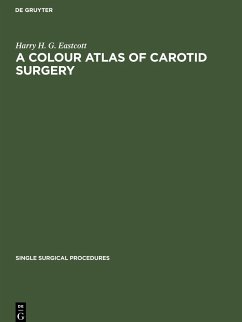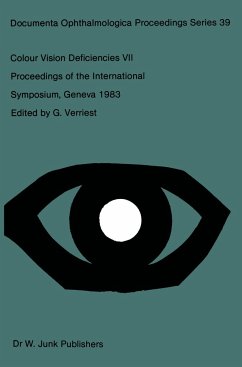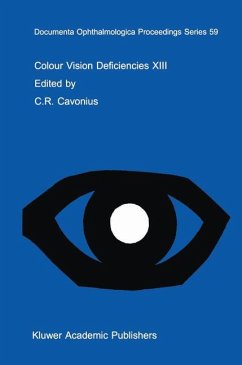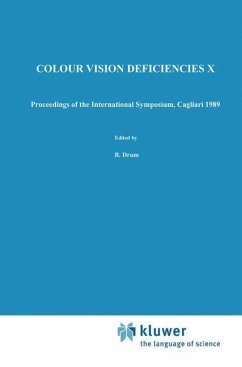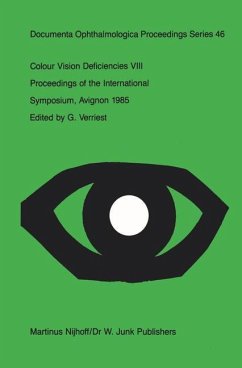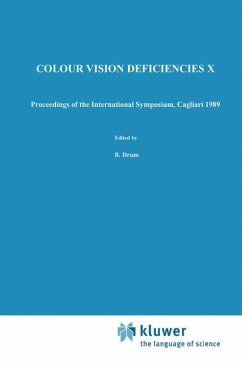
Colour processing in the human retina
Versandkostenfrei!
Versandfertig in 6-10 Tagen
55,99 €
inkl. MwSt.

PAYBACK Punkte
28 °P sammeln!
The work in this book is concerned with examining the retinal contributions to human trichromatic colour vision. Chromatic processing at the retinal level was examined using the electroretinograms (ERGs) for which cone isolating stimuli were used to assess the nature of L and M cone inputs to cone-opponent mechanisms. From the experiments, It has been shown that the low (12Hz) and high (30Hz) temporal frequency flickering stimuli can isolate the chromatic and luminance processing mechanisms in the retina. For low temporal frequency ERGs, the L:M ratio was close to unity and L/M phase differenc...
The work in this book is concerned with examining the retinal contributions to human trichromatic colour vision. Chromatic processing at the retinal level was examined using the electroretinograms (ERGs) for which cone isolating stimuli were used to assess the nature of L and M cone inputs to cone-opponent mechanisms. From the experiments, It has been shown that the low (12Hz) and high (30Hz) temporal frequency flickering stimuli can isolate the chromatic and luminance processing mechanisms in the retina. For low temporal frequency ERGs, the L:M ratio was close to unity and L/M phase difference was close to 180°.For high temporal frequency ERGs, the L:M ratio was more than unity and L/M phase difference was close to 90°. In addition to this, the variation in L:M ratio across the retinal eccentricity was also examined. These results suggest, for the chromatic processing, L:M ratio is close to unity independent of retinal eccentricity and individuals. For the luminance processing, L:M ratio is more than unity and depends upon the region of the retina being stimulated. These findings indicate the maintenance of cone selective input for the chromatic processing across the human retina.



